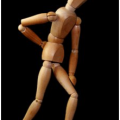Are you tired of constantly grappling with chronic pain and struggling to find the lasting relief that you need? Do you feel like you’ve tried every possible solution without success and have nearly given up hope on finding the right remedy for your issues? Don’t worry; it’s time to put an end to your suffering and we can help you find the right solution to your issues.
Chronic pain is an incredibly serious problem for many people worldwide, affecting an estimated 10% of the global population every year, or roughly 60 million people. Although every case of chronic pain is unique to the individual and the right remedies will vary from person to person, there are still many highly effective strategies and techniques that can help you overcome your pain. In this article, we will explore several of these solutions in greater detail so that you can gain the tools and knowledge to finally find relief.

Causes of Chronic Pain
All kinds of factors can contribute to the development of chronic pain including illnesses, injuries, ongoing health conditions, and so much more, and most of the time, chronic pain is caused by a simultaneous combination of multiple factors. In many cases, chronic pain is caused by inflammatory-based conditions like arthritis, which causes inflammation and pain in the joints. Previous injuries like bone fractures or nerve damage can also lead to long-lasting pain, but many suffer from chronic pain in the absence of any past injury or illness.
Chronic pain issues span the gamut and can come in many capacities including back pain, cancer pain, arthritis pain, recurring headaches, and more. While some pain can be managed effectively through OTC medications and physical activities, chronic pain can eventually become such a problem that it interferes with your daily work and normal living activities. This is referred to as the “terrible triad,” which is a consistent state of suffering, sleeplessness, and sadness due to the intense and non-stop pain symptoms.
Whether you’re experiencing the “terrible triad” or not, chronic pain should not be ignored and you should explore a variety of therapeutic interventions and strategies to find the lasting relief that you need.
Physical Therapy Techniques
Physical therapy encompasses a wide range of treatment techniques designed to improve mobility, reduce pain, and restore function in patients’ bodies. There are many types of physical therapies available today and each one has a specific focus and approach to rehabilitation. Let’s explore the different types of physical therapies and the specific benefits they can offer patients like you.
Electrical Nerve Stimulation
Electrical nerve stimulation (ENS) is an innovative therapy introduced to the field within the last few decades that applies small electrical pulses to specific areas of the body to treat a variety of conditions, including chronic pain. This technique can be highly effective at managing and improving pain because the electrical impulses target specific nerves and interrupt pain signals traveling from those afflicted areas, which can be incredibly valuable for those seeking pain relief. In addition, these electrical impulses may also stimulate the production and release of endorphins, which are the body’s natural painkillers.
There are different types of electrical nerve stimulation devices, including transcutaneous electrical nerve stimulation (TENS) units, spinal cord stimulators, peripheral nerve stimulators, and many others. These devices can be used both in clinical settings and at home with proper guidance from healthcare professionals, and as their names may imply, each ENS device has a unique purpose and functions in different ways.
TENS units are frequently used to alleviate chronic pain by delivering electrical pulses through electrodes placed on the skin. In contrast, spinal cord and peripheral nerve stimulators are often surgically implanted devices. These devices provide continuous electrical stimulation to manage severe, chronic pain, and nerve-related conditions and could be exactly what you need to find lasting pain relief.
Muscle Tension Release Techniques
Muscle tension can be released through a variety of physical therapy techniques, including things like soft tissue mobilization. This form of manual therapy aims to reduce tension in the muscles by breaking down scar tissue. During treatment, your physical therapist will use their hands or an instrument to mobilize and manipulate the soft tissue in afflicted areas to alleviate tension by focusing on breaking down the scar tissues.
Along a tangential line of thought, it’s a good idea to explore other tension-release strategies like muscle energy techniques. In these forms of manual therapy, your physical therapist will apply a controlled force to your muscles to stimulate contraction in the targeted area. This targeted pressure has been shown to help reduce pain and tension in the muscles, while also revitalizing your energy.
Acupuncture
Acupuncture is a complementary therapy that has the potential to provide short-term relief for pain and inflammation in conditions such as lower back pain, neck pain, knee pain, and osteoarthritis. This ancient treatment involves the placement of thin needles along the energy meridians in your body to remove blockages in your energy flows. Many have found relief from acupuncture treatments and while clinical results have been mixed, the evidence for the long-term effectiveness of acupuncture in managing chronic pain is growing.
That said, it’s best to think of acupuncture as an adjunct therapy to add to your treatment plan alongside other therapies and techniques.
Chiropractic Adjustments
Chiropractic adjustments involve the hands-on manipulation of the body’s musculoskeletal structure to restore proper alignment and alleviate pain and discomfort. Every chiropractor approaches their practice a little differently, but the general process revolves around manual techniques that aim to realign the spine and other joints, enhancing overall function and mobility. You stand to gain tons of benefits from chiropractic adjustments including reduced inflammation, alleviated discomfort, and improved range of motion.
Hyperbaric Oxygen Therapy
Also referred to as HBOT, hyperbaric oxygen therapy is an innovative treatment strategy that can expedite recoveries from illnesses and injuries and support greater quality of life too. During this therapy, you’ll enter a pressured chamber that is filled with nearly 100% pure oxygen and remain lying down for roughly 30-60 minutes. This gives you a ton of time to breathe in higher levels of oxygen, which increases the oxygenation in your blood and, in turn, improves your overall health.
Many have found HBOT to be a highly effective and reliable treatment for pain-related symptoms and conditions, which means it could be an ideal treatment to add to your rotation.
Psychological Therapies for Chronic Pain Management
 Psychological therapies are important in chronic pain management as they can help address the psychological factors that can worsen pain symptoms. It’s a good idea to integrate both psychological treatments alongside physical treatments in the management of chronic pain issues.
Psychological therapies are important in chronic pain management as they can help address the psychological factors that can worsen pain symptoms. It’s a good idea to integrate both psychological treatments alongside physical treatments in the management of chronic pain issues.
Cognitive Behavioral Therapy (CBT)
You’ve likely heard of cognitive behavioral therapy (CBT) before, which is a cutting-edge psychological treatment that helps patients recognize and change negative thoughts, learn effective coping strategies, and set goals for enriching their quality of life. CBT techniques focus on promoting positive thinking, increasing activity levels, and improving coping techniques to reframe one’s perception of oneself and the world around them in a better light.
CBT has been shown to be highly effective in reducing pain and anxiety while improving the overall quality of life for people with chronic pain. This is because CBT helps address negative thoughts and emotions – feelings that can exacerbate pain symptoms – and the therapy can help individuals develop healthier coping mechanisms for pain symptoms, which helps promote a more positive outlook. As a result, many patients participating in CBT often experience a significant reduction in pain and anxiety, along with an overall improvement in their quality of life. This makes CBT a valuable and effective approach for individuals suffering from chronic pain.
Mindfulness-Based Stress Reduction (MBSR)
MBSR is a therapeutic program that teaches individuals mindfulness techniques like meditation to help manage stress, pain, and illness. It incorporates yoga and meditation to enhance awareness of both the body and mind and can lead to a reduction in chronic pain and an improvement in overall well-being because it encourages individuals to become more “in tune” with their bodies and learn to respond to pain more mindfully.
Additional Relaxation Techniques for a More Balanced Life
While professionals can help you find the pain relief that you’re searching for, you can take steps on your own time to alleviate your pain symptoms proactively with an array of tried-and-tested relaxation strategies. For instance, deep breathing exercises can help reset your focus and your mind so that you aren’t fixating on enduring pain symptoms.
In addition, progressive muscle relaxation can help alleviate pain by moving the focus of your attention to various muscle groups, as you tense and relax these areas. Be sure to explore a variety of relaxation strategies on your own time to identify ones that work best for your needs.
Prescription Treatments for Chronic Pain
As mentioned earlier, the most effective treatment plans for chronic pain will integrate a variety of treatment techniques and strategies tangentially to provide the maximum possible benefit. In many treatment plans, prescription drugs are a supporting piece of the puzzle, but they are not the end-all remedy for your pain symptoms. These medications only mask the pain symptoms and do not address the underlying causes of the symptoms. Just be mindful of how you add prescription meds to your treatment plan.
Many types of anti-inflammatory drugs are commonly used to alleviate inflammation and pain, and each category has specific purposes. Make sure you understand how each one can benefit you and the downsides of each option too when you approach your healthcare provider for a pain medication prescription.
| Nonsteroidal Anti-Inflammatory Drugs (NSAIDs) | Antidepressants | Anti-Seizure Medications (e.g., gabapentin, pregabalin) | |
| Mechanism of Action: | Inhibiting prostaglandin production, reducing inflammation and pain. | Altering neurotransmitter levels in the brain to mitigate pain signals. | Calming overstimulated nerves, reducing pain signal transmission. |
| Applications: | Effective for conditions like arthritis and muscle sprains. | Particularly for chronic pain conditions like fibromyalgia and neuropathic pain. | Reduction of inflammation and pain. |
| Risks & Side Effects: | Potential gastrointestinal bleeding, kidney issues, increased risk of heart attack or stroke. | Possible weight gain, sexual dysfunction, and drowsiness. | Potential dizziness, drowsiness, and weight gain. |
Chart Your Path to a Pain-Free Life Today
Chronic pain can be a debilitating and overwhelming condition, but it doesn’t have to dominate every part of your life. Regaining control of your symptoms and triumphing over your pain is achievable through the implementation of the highly effective solutions mentioned above. With determination, perseverance, and the right support, you can find relief and live a fulfilling life free from the grips of chronic pain.
Take that first step towards a pain-free future and start implementing these solutions today!



 (3 votes, average: 3.67 out of 5)
(3 votes, average: 3.67 out of 5)









